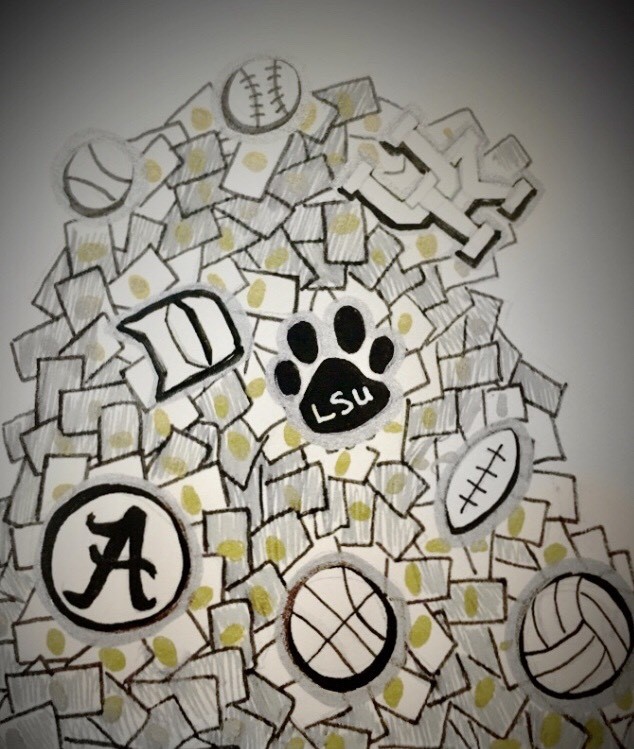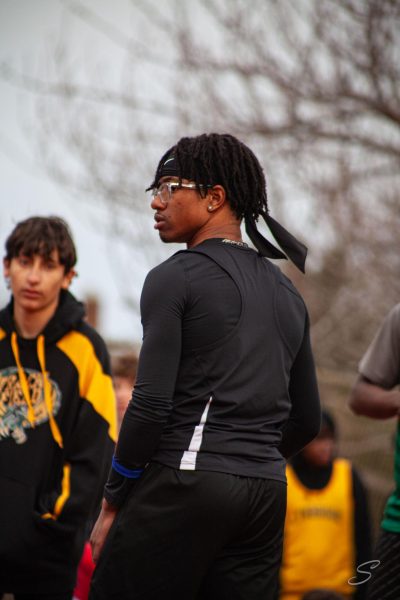The Slippery Slope of Paying College Athletes
There are over 450,000 college athletes in the United States, and only two percent make it to a professional league. Additionally, many college athletes who go on to play sports professionally struggle to make a sufficient salary once arrive in the pros. The life of a student athlete is difficult. He/she trains year round and must also study and do well academically to stay in school and on his/her respective team. The travel and stress that comes with being a student-athlete is enervating to the young adults. Although many of them get scholarships to college, once they are there, it is very hard for them to make money. The National Collegiate Athletic Association (NCAA) is not allowed to pay its athletes, and, in most states, it is illegal for collegiate athletes to be paid by outside organizations. Paying college athletes is a slippery slope, and there are many questions from that could vary people’s opinions on the matter. Which athletes should get paid? How much should they get paid? From where does this money come? But here is the truth: no matter the law, many big schools may be paying their top athletes in some way, without anyone knowing it, but legalizing the issue can potentially make things much more complicated. Who should get paid? How much should they be paid? The difficult work and training the athletes participate in should pay off; the student athletes should be able to be endorsed.
The University of Alabama is historically the top collegiate football program in the country. Each season, the university generates over one-hundred million dollars from its football team with a profit of over forty-million dollars. Yes, it is a large university with a large fanbase, but this type of profit would not be possible without the talent of its players. Most large universities make profits greatly because of their successful teams, and the more successful the team is, the more money it makes. The NCAA recently revealed the most winning basketball programs of all time, and the University of Kentucky came out on top with an overall record of 2217-841, giving it an overall win percentage of over 70%. Of course, a program like this will bring in a great deal of money every year. The article “The Most-Valuable College Basketball Teams” from the Forbes website (www.forbes.com), shares that Kentucky basketball has a total revenue of forty-nine million dollars a year. This is an incredible amount of money, and this is only from one school and one sport. Schools that make a comparable amount of money are in the “Power Five” conferences. These conferences have fifty of the largest universities in the country, and most of the money is made from men’s basketball and football. This money goes to the school, the coaches, and, oftentimes, the team. But, the athletes, the ones who bring in this revenue, do not get paid. Sophomore Keziah Job expressed her belief that college athletes should get paid: “Because the money that they get [paid] is for paying for their college classes. If being an athlete doesn’t work out, they will have a place to stand on.” She stated that she believes that colleges do not pay their athletes because “[The colleges] are greedy.”
The NCAA forbids schools from paying their athletes, for logical reasons. If every school from every conference has to pay every athlete in every sport, their profits would quickly run out. But how does a university choose which athletes are paid and which are not? It cannot. But there is a way around this: endorsements. If an athlete is good enough to be recognized by a multi-million-dollar corporation or even a local coffee shop, the NCAA should not hold him/her back from getting paid. Athletes are young adults who devote their college years to a sport, and that makes it hard to get a job while in college. With this in mind, there is reasonable belief that some college athletes are already illegally making money. The large schools with large athletic programs have boosters. Boosters can illegally pay players in two ways: they can give money to the athletic department (which then goes to the student athletes), or they can directly pay the student athletes. This process will continue until colleges pay athletes, which reasonably will never and should never happen. But, to combat this issue, student athletes should be allowed to be endorsed. California has recently become the first state to legalize the endorsement of college athletes. This is just one step forward on the path to ending the corruption between student athletes and the rest of the world. Will under-the-table and illegal deals still be made? Yes. But at least some athletes will be recognized in a way they deserve.
This debate is heated and ongoing. Sophomore Sam Guggino agreed. She explained that college athletes should get paid because “[the athletes] do a lot of work for their sports.” Sophomore Tyler Ippolito echoed his peers’ thoughts. He believes college athletes should get paid because “The colleges are getting money from them playing the sports.”
College athletes train every day and work hard, and this should pay off. There are 450,000 college athletes; it should not just be 2% who benefit from their talent.

I am Sophie Ward, and I am a managing editor for lhshorizon.com. I am a member of the Class of 2022. I love playing tennis and working out. I also enjoy...







































